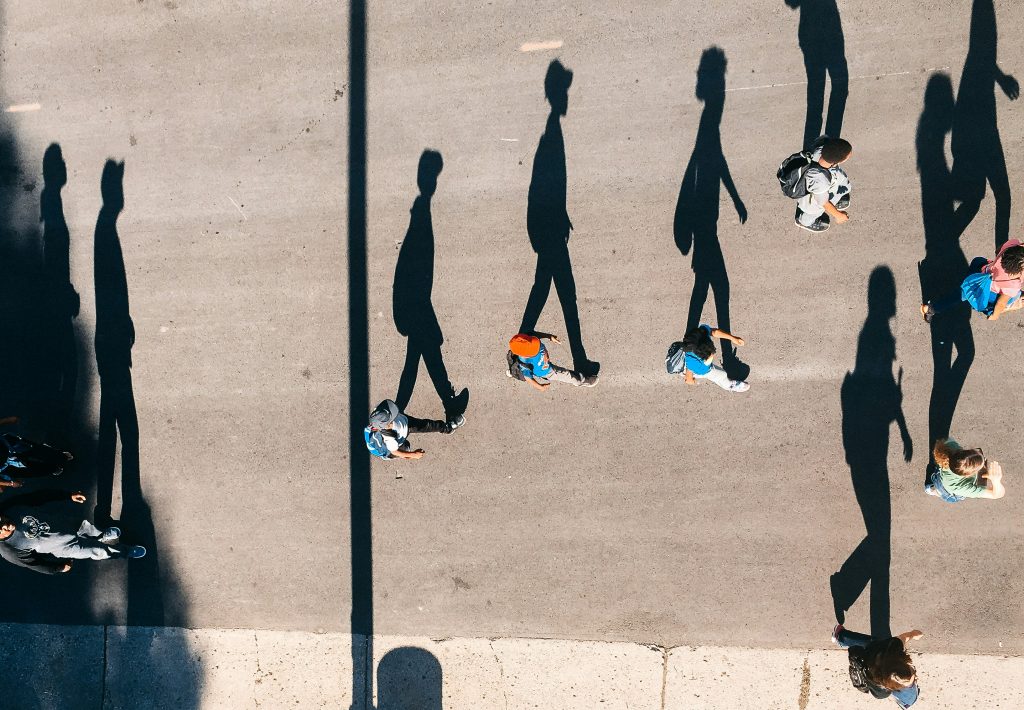Even before the government amended the social distancing rules, I’ve noticed people start to flout the ‘stay at home’ guidelines more and more as lockdown continues. When I first had to travel across London to collect some bits from my office, the city was deserted. But in the past two weeks, it’s got noticeably busier.
There’s been a lot of talk about the ‘Blitz spirit’, too, and this got me thinking. When I was writing a book on crisis communications last year, I came across some interesting research that shows how people behave as a crisis continues, and if they’re not directly affected by it. In the case of the Blitz, that means not suffering a direct bomb hit; in the case of COVID-19, it means not getting seriously ill from the virus, or not knowing someone who has died. It also shows how hard it is to communicate in a way that people will act on guidance.
In 1943, a Canadian psychiatrist, JT MacCurdy, published his book The Structure of Morale. In it, he examines the impact of fear on morale. During the Second World War, he says, people in Britain were prepared for the impact of being bombed, mostly by propaganda or by war films. Both focused on the most devastating effect a direct hit by a bomb could have – loss of life, destruction of property, the end of a way of life. In a film, every bomb hits its target. The only way to survive would be to be out of the area, or deep in a shelter.
MacCurdy tells us that as the first sirens were heard in 1940 in London, people scurried to their bomb shelters not really knowing if they would emerge. He quotes a friend of his saying: “When the first siren sounded I took my children to our dug-out in the garden and I was quite certain we were all going to be killed. Then the all-clear went without anything having happened. Ever since we came out of the dug-out I have felt sure nothing would ever hurt us.”
According to MacCurdy, this reaction was typical. When the sirens became more commonplace, and where bombs weren’t dropped, people got bored, not afraid. Many stopped taking shelter altogether. They had started to believe they wouldn’t be hit.
His research shows that when a bomb explodes in a congested area, it divides people into three broad groups:
1. Those who are killed. MacCurdy says: “The morale of the community depends on the reaction of the survivors”. Bluntly, he says: “Corpses do not run about spreading panic.”
2. Near-misses. These are those people who are in the area that the bomb explodes. They witness the devastation and horror, and are deeply affected by it.
3. Remote-misses. These are people who hear the sirens, and they hear the bomb drop, but are not in the immediate vicinity. They are safe. They feel excitement and relief. And they feel something else that is very important: they feel invulnerable. (This may be why the bombings of London by the Luftwaffe, designed to bring the city to its knees, actually did the opposite, in terms of morale, bonding people in the famous ‘blitz spirit’, determined not to be defeated. It made those who had survived, braver.)
I wonder if we’re seeing something similar now. Those people who haven’t been directly affected – they don’t know anyone who has died of COVID-19, for example – feel invulnerable. They don’t feel they have to take the government’s advice. They don’t need to – they’re immune in some way.
That attitude should shape the messages that are communicated by the government as a crisis unfolds. I’m assuming, too, that there will always be people at either extreme of this – those who will always follow the rules, and those who will always break them. It’s the masses in the middle who will have the greatest influence as the crisis develops.
How do you communicate with a group of people who believe they are immune? Scaring them won’t help. Nor will giving them autonomy to decide what’s acceptable. Perhaps it is communicating a sense of collective responsibility that will do it. Individually, we may not be affected. But collectively, we can make a difference. Above all, we need clarity. What should we each be doing that will help the group?
–
Featured photo by Andrew Gook on Unsplash








